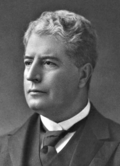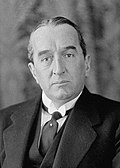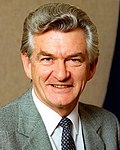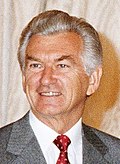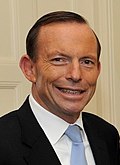Top Qs
Timeline
Chat
Perspective
List of Australian federal elections
From Wikipedia, the free encyclopedia
Remove ads
This article summarises results for the general elections to the Australian House of Representatives and Senate, respectively the lower and upper houses of Australia's federal bicameral legislative body, the Parliament of Australia. The number of seats has increased steadily over time, from 111 for the first election, to the current total of 227; 151 in the Lower House and 76 in the Upper House. The current federal government structure was established in 1901 by the Commonwealth of Australia Constitution Act, 1901.
The first three national elections resulted in minority governments. The world’s first ever Labor Party Prime Minister took office in Australia in 1904, though Labor governed in minority. The first majority government was formed in 1909, when the Protectionist Party merged with the Free Trade Party in an anti-socialist alliance. However, the first Party to win majority government at an election was the Labor Party in 1910.
During the first 50 years of Federation, the Labor Party was the most successful party, governing for approximately fifteen years in total. The Nationalist Party governed for approximately twelve years and The United Australia Party governed for approximately nine years.
However, after the formation of the Liberal Party of Australia, it became the dominant force. After winning its first election in 1949, the Liberal Party of Australia stayed in power for approximately 22 years. From 1949-2025, it has held office for a total of approximately 50 years. During the same time, the Labor Party has held office for approximately 24 years. However, in the period from 1972-2022, both Labor and Liberal have held power for almost equal lengths of time - the Liberals (in Coalition) have held power for 28 years and Labor has held power for 24 years.
Since WW2, two groups have dominated politics in Australia: Labor and the Coalition, composed of the Liberal Party and the National Party (formerly the Country Party). Since the foundation of the Liberal Party in 1944, every government has been formed either by the Coalition or by the Labor Party. Prior to this, the main non-Labor Parties to form government consisted of the Protectionist party (which formed the first government in 1901), the Nationalist Party and the United Australia Party (which was led by Robert Menzies prior to him founding the Liberal Party).
Although government has been a two-party system, since 1955 Australians have consistently elected Senators from multiple parties. This has included defectors from the major parties such as the Democratic Labor Party, which was formed by defectors from the Australian Labor Party, and the Australian Democrats, whose founding leader defected from the Liberal Party. In the 1955 election one DLP candidate was elected (under the ALP-AC banner). Although the DLP ceased to be a force after Gough Whitlam took power in 1972, the Liberal Movement and its successor the Australian Democrats carved out their own niche. In the 1980s the NDP briefly gained election, and in the 1990s the Greens were elected to the Senate.
By 2007, the Democrats' federal parliamentary representation had disappeared, while the Greens have emerged at the national level to take their place. The Nationals' representation has also steadily declined, with their percentage of the vote hitting new lows. With the high-profile defection of Senator Julian McGauran to the Liberals in 2006, questions have been raised about the Nationals' viability, and proposals for a Liberal-National party merger have increased in strength. More recently various smaller parties or microparties are represented.
Remove ads
Results
Summarize
Perspective
House of Representatives
The total for the party forming government after the election is bolded. Parties that have never formed government are listed under "Others".
House of Representatives primary, two-party and seat results
A two-party system has existed in the Australian House of Representatives since the two non-Labor parties merged in 1909. The 1910 election was the first to elect a majority government, with the Australian Labor Party concurrently winning the first Senate majority. Prior to 1909 a three-party system existed in the chamber. A two-party-preferred vote (2PP) has been calculated since the 1919 change from first-past-the-post to preferential voting and subsequent introduction of the Coalition. ALP = Australian Labor Party, L+NP = grouping of Liberal/National/LNP/CLP Coalition parties (and predecessors), Oth = other parties and independents.
Remove ads
Historical party composition of the Senate
Summarize
Perspective
The Senate has included representatives from a range of political parties, including several parties that have seldom or never had representation in the House of Representatives, but which have consistently secured a small but significant level of electoral support, as the table shows.
Results represent the composition of the Senate after the elections. The full Senate has been contested on eight occasions; the inaugural election and seven double dissolutions. These are underlined and highlighted in puce.[2]
Remove ads
See also
Notes
- Includes results for the Free Trade Party for 1901 and 1903, the Anti-Socialist Party for 1906, the Commonwealth Liberal Party for 1910—1914, the Nationalist Party for 1917—1929, and the United Australia Party for 1931—1943.
- Includes results for the Country Party for 1919—1974 and the National Country Party for 1975—1980.
- Includes results for the Free Trade Party for 1901 and 1903, the Anti-Socialist Party for 1906, the Commonwealth Liberal Party for 1910—1914, the Nationalist Party for 1917—1929, and the United Australia Party for 1931—1943.
- Includes results for the Country Party for 1919—1974 and the National Country Party for 1975—1980.
Remove ads
References
Wikiwand - on
Seamless Wikipedia browsing. On steroids.
Remove ads
